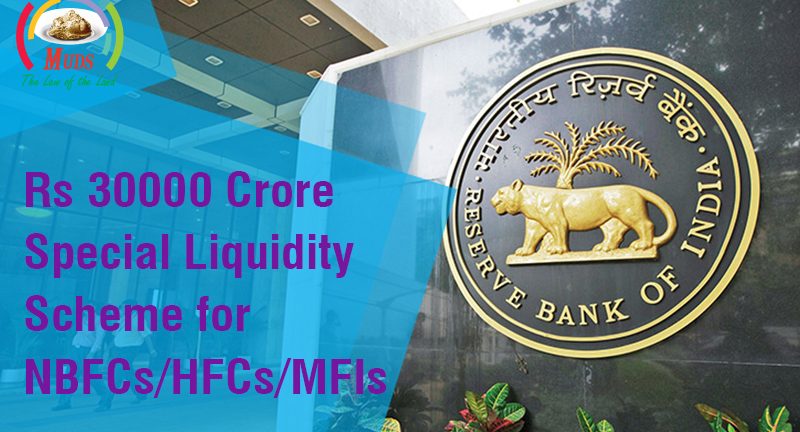Rs 30000 Crore Special Liquidity Scheme
Prime Minister announces Rs 20 Lakh Crore financial package
The pandemic, COVID-19, has brought about an unprecedented economic crisis worldwide. In India in an attempt to save lives, a lockdown has been initiated, and though it has helped in slowing the spread of Coronavirus and saved lives but has killed livelihoods.
This is a precarious situation as all economic activities, except for a few essential services, have come to a standstill. As the lockdown period keeps extending, caged people- from labourers to industrialists become restless and anxious about the future course of action.
Prime Minister Modi is acutely aware and sensitive to the economic hardships being faced by his countrymen and therefore, on 12 May he announced a Rs 20 lakh crore financial package to revive the Indian economy. In his address to the nation, Mr Modi stated, “This (package) is 10 per cent of India’s GDP and will play an important role in the ‘Atmanirbhar Bharat Abhiyan’.”
Throwing some light on the package, the Prime Minister said that the thrust of the economy in future will be self-reliance and also that the package shall have something for everyone.
Finance Minister announces Rs 30k cr support for NBFCs, HFCs, MFIs
On 13 May, the Finance Minister Nirmala Sitharaman addressed a press meet to provide details of the first tranche of the government’s Rs 20 lakh crore stimulus package for the coronavirus-hit economy.
She announced a Rs 30,000 crore Special Liquidity Scheme for the non-banking financial companies (NBFC), housing finance companies (HFC) and micro-finance institutions (MFI).
Amid coronavirus crisis, this special liquidity window will provide support to the cash-strapped NBFCs. Elaborating on the point the finance minister said, “We have been hearing that NBFCs were not able to get enough resources despite efforts from government and RBI, especially those which were particularly not highly rated.”
Under this scheme, the investment will be made in both primary and secondary markets in investment-grade debt papers of NBFCs, HFCs and MFIs.
Sitharaman further added that the scheme will supplement the Reserve Bank of India and government measures to increase liquidity by providing a guarantee to investment-grade securities.
Addressing a press briefing she went on to explain that the securities under the scheme will be fully guaranteed by the Central government and will thus, provide liquidity support for the sector and mutual funds and create confidence in the market.
In the last two Budgets also the government had announced a series of measures like partial credit guarantee scheme (PCGS). The earlier scheme had certain restrictions which the government has decided to do away with as they realize that NBFCs, HFCs and MFIs require liquidity.
Thus, a Rs 45,000 crore partial credit guarantee scheme 2.0 was also unveiled for NBFCs, HFCs and MFIs with low credit rating to help them extend loans to individuals and MSMEs.
“Existing PCGS scheme to be extended to cover borrowings such as primary issuance of Bonds/ CPs (liability side of balance sheets) of such entities and the First 20 per cent of loss will be borne by the Guarantor i.e., Government of India,” Sitharaman further announced.
Nimish Gupta FRICS – MD, South Asia, sees this as a positive step and he explains, “The credit guarantee scheme for NBFCs and HFCs will prove extremely helpful in building much-needed liquidity flow across the chain.”
Thus, a Rs 75,000 crore package consisting of a special liquidity scheme and partial credit guarantee for debt papers will provide additional liquidity boost to NBFCs, HFCs and MFIs.
Mr Rajosik Banerjee, partner and head, financial risk management, KPMG India, sums it all as, “Liquidity measures and partial credit guarantee scheme 2.0, amounting to a total of ₹75,000 crores, will infuse more money in the financial system and, thereby, benefit the NBFCs in a big way. This was a much-needed impetus needed to push the economy forward.”


